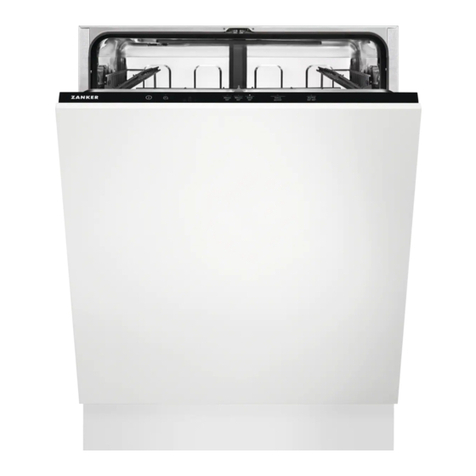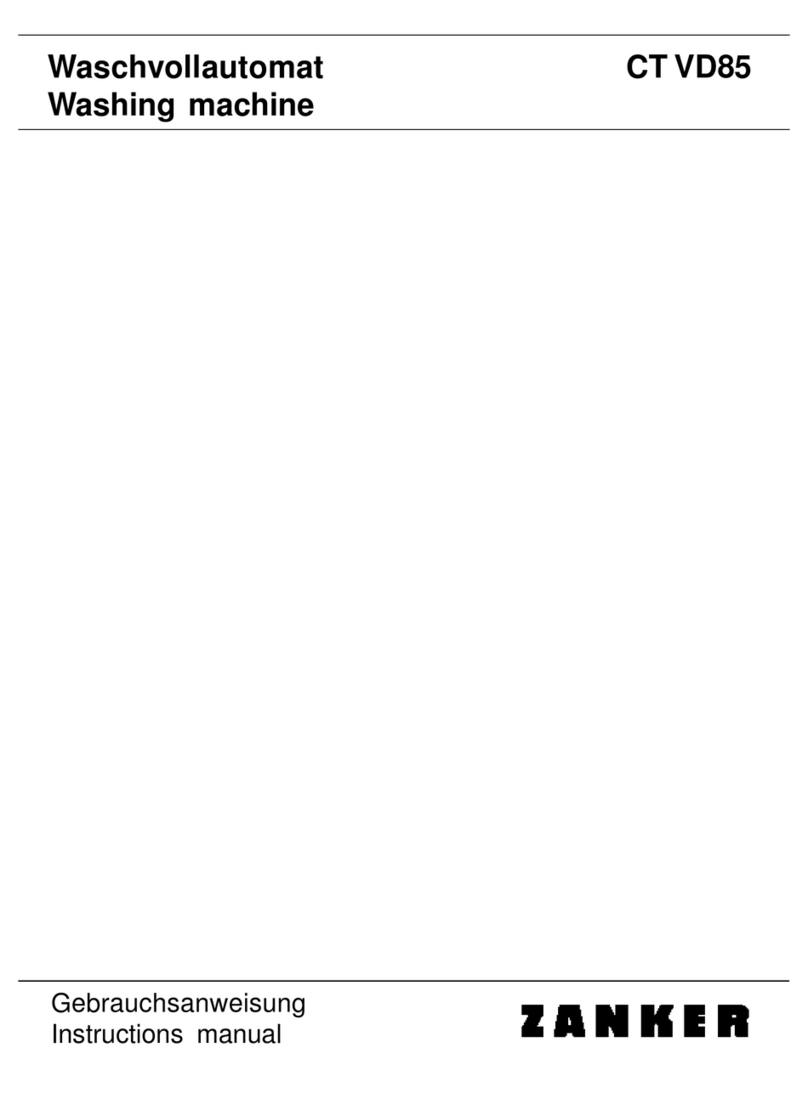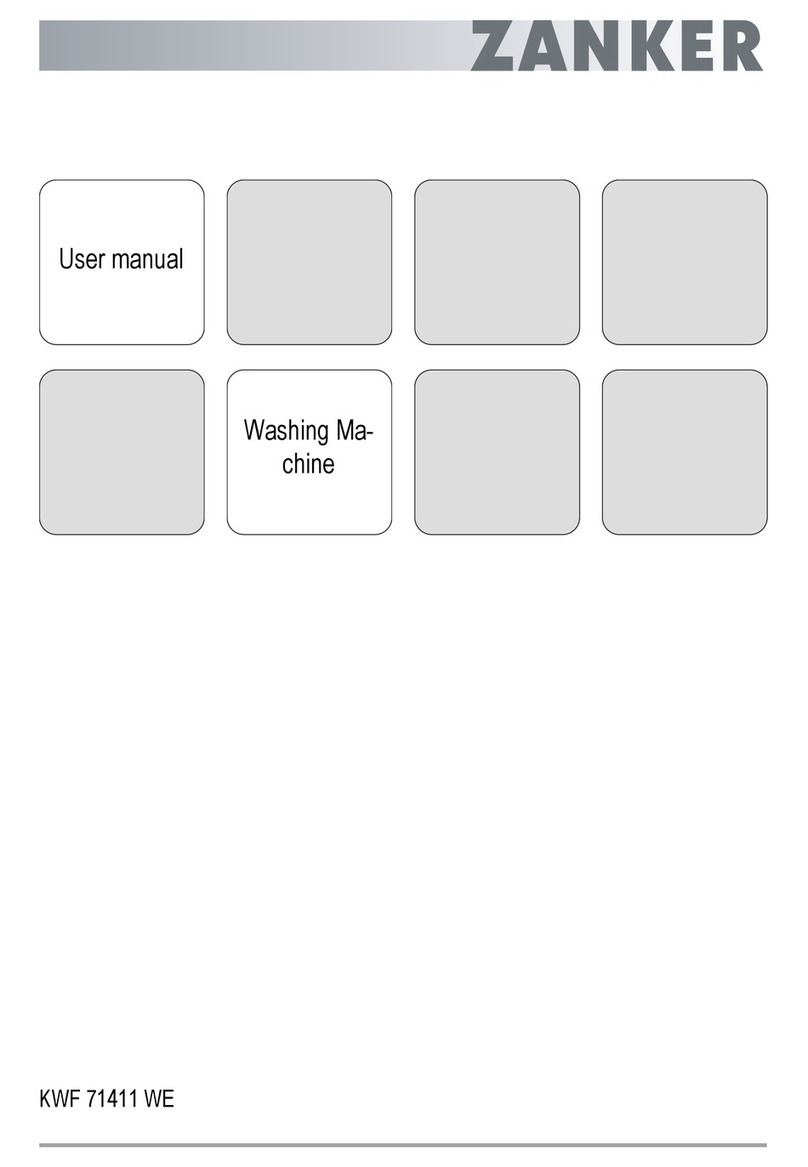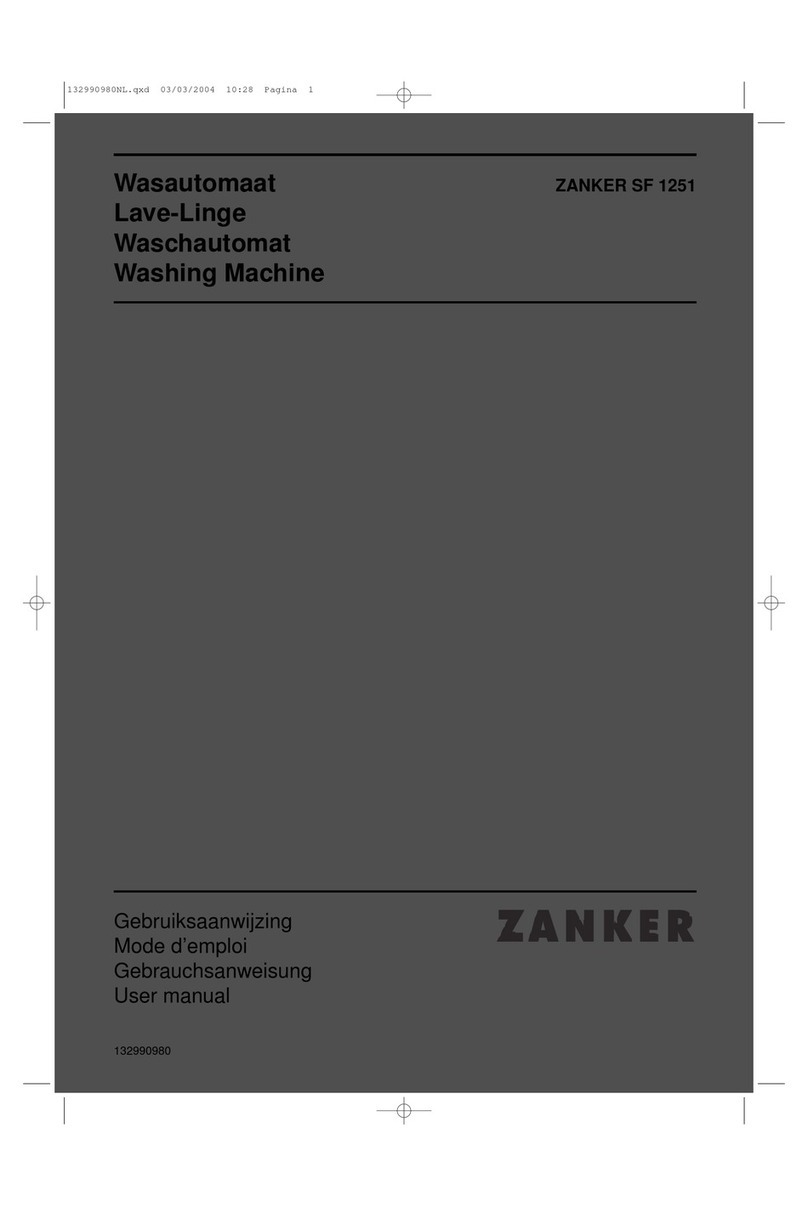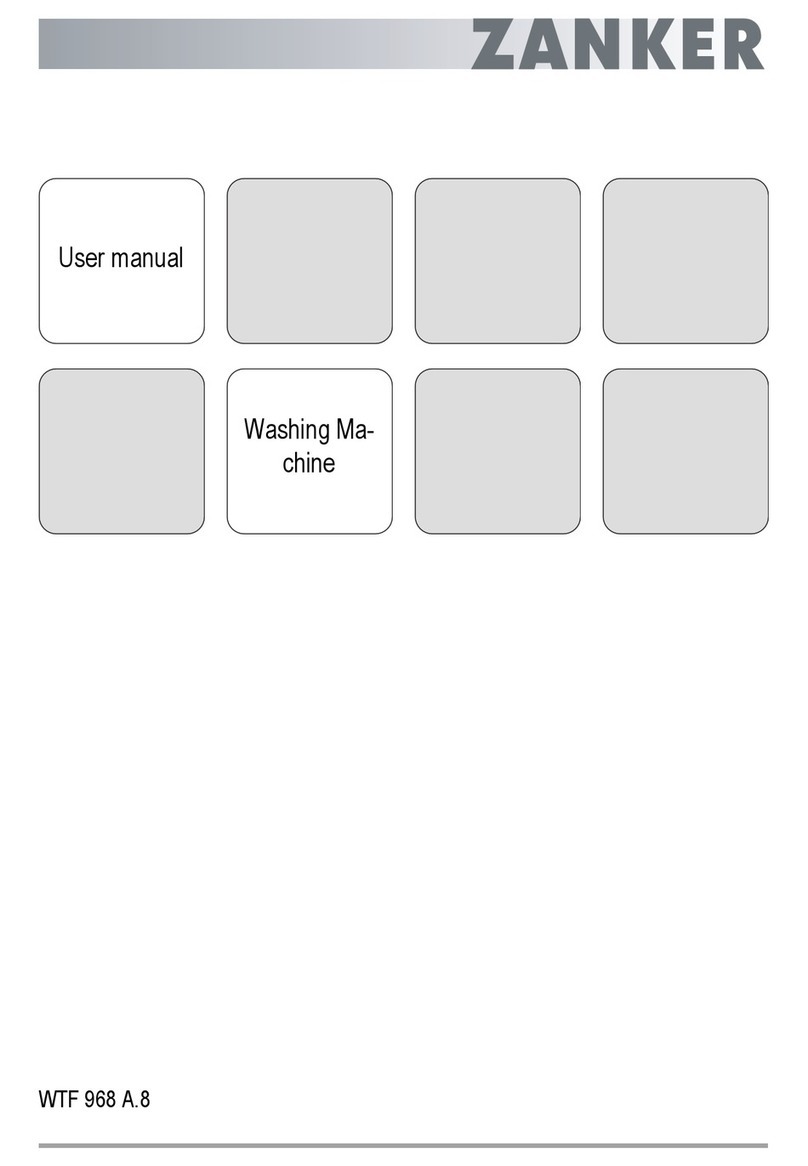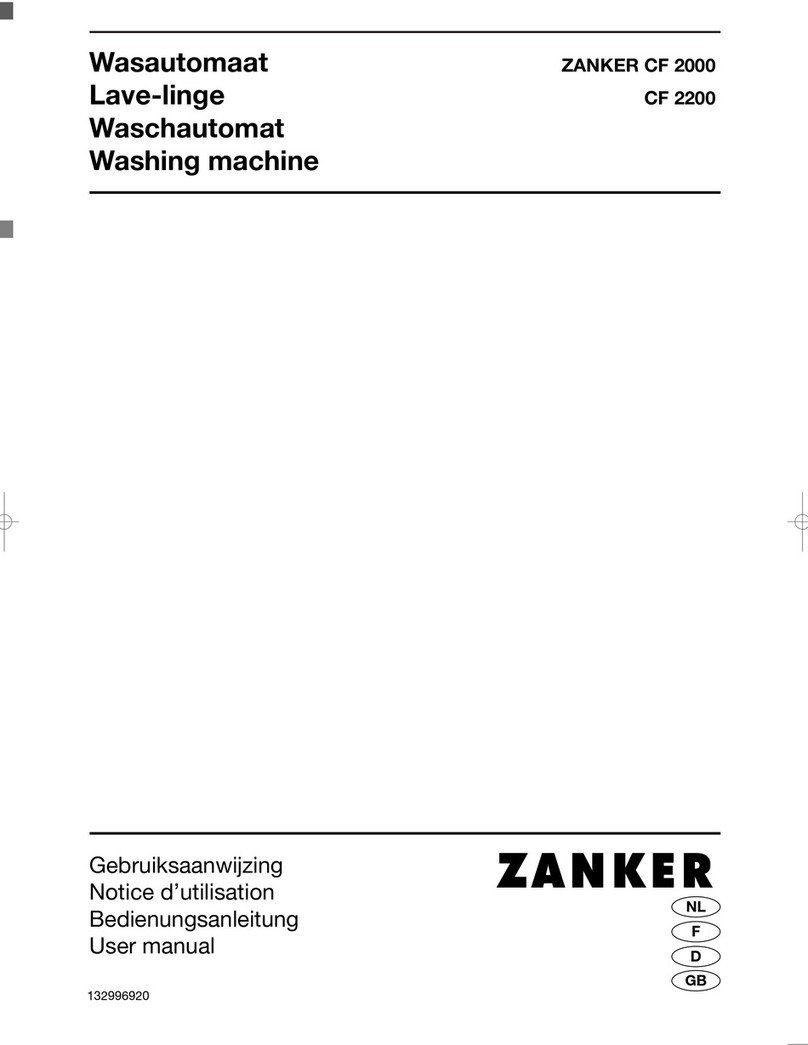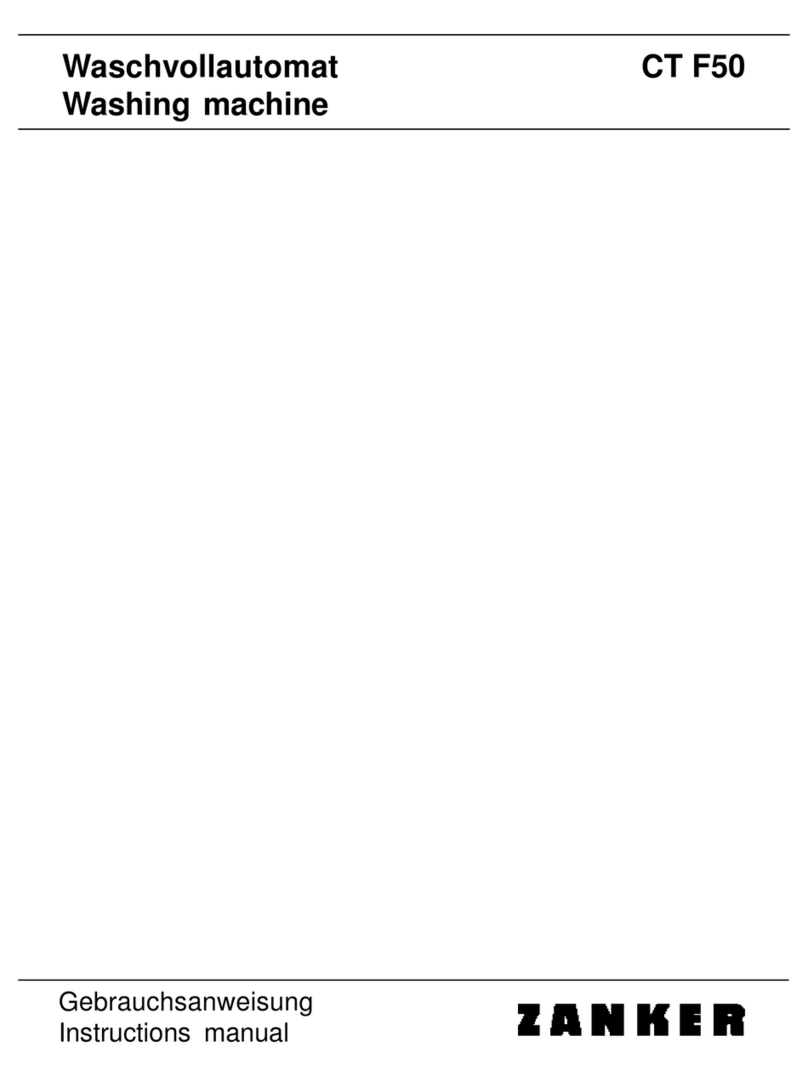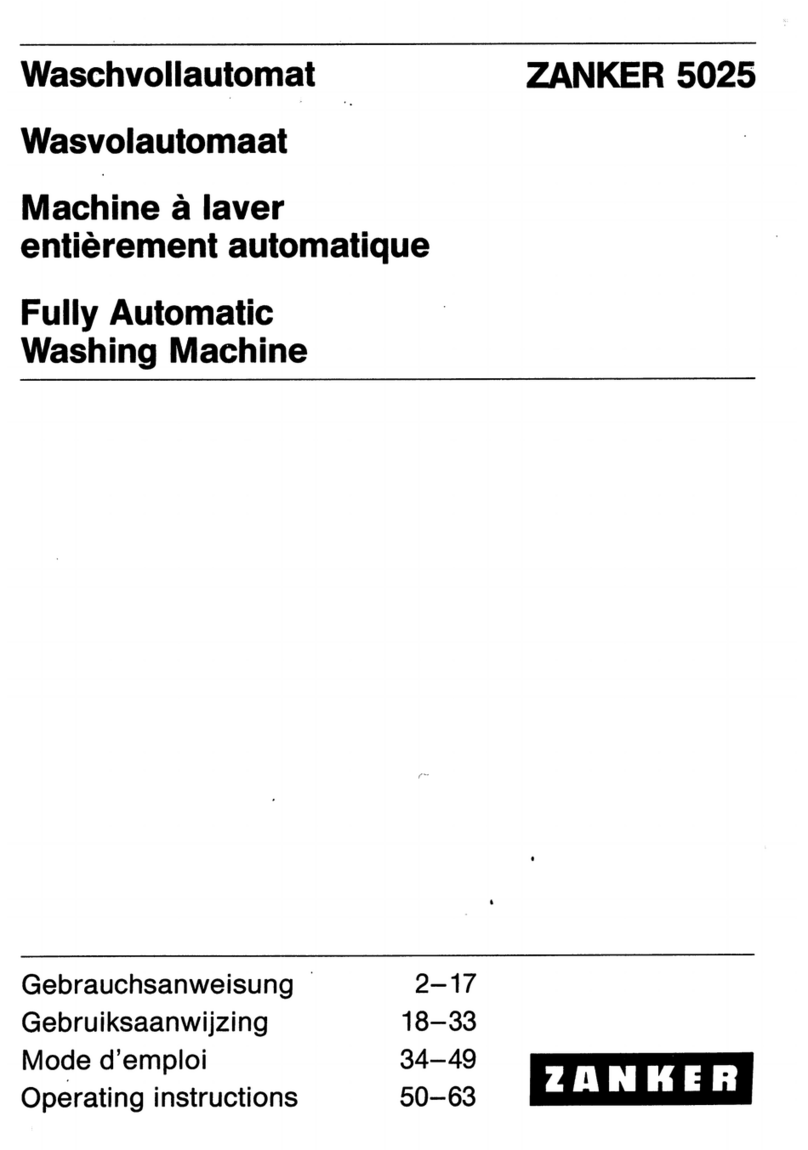22
You must read the whole of this instruction book
before you use the appliance. Follow the advice
carefully.Keepthebookforfuturereference.Ifyou
sellorgiveawaytheappliance,makesurethatthe
book is passed to the new owner.
Thefollowingwarningsareprovidedintheinterest
of overall safety. You must read them before the
appliance is installed or used.
Use
This appliance is designed to be used by
adults.Children shouldnotbeallowedtotouch
the controls or play with the product.
It is dangerous to modify the specifications of
this appliance in any way.
Always unplug the appliance and turn off the
water after use.
Only wash fabrics with are designed to be
machinewashed.Ifindoubt,followtheinstruc-
tions you find on the label of the item itself.
Place small metal rings or edged plastic rings
in a net or bag.
Make sure that all pockets are empty. Hard,
sharpobjects suchascoins,safety pins,nails,
screwsorstonescancauseextensivedamage.
Do not machine wash fabrics which are
saturated with petroleum products. If volatile
cleaning fluids have been used, make sure
that they are thoroughly removed from the
fabricsbeforetheyareplacedintheappliance.
Small and delicate objects (e.g. baby socks,
stockings)canbeeasily washed inside asmall
pillowcase with a zip fastener or in larger
socks.
Useonlythe recommended quantitiesoffabric
conditioner.
Beforecleaning,careandmaintenance,ensure
that the machine is unplugged.
Installation
Any electrical work required to install this
appliance should be carried out by a qualified
electrician or competent person.
Any plumbing work required to install this
appliance should be cariied out by a qualified
plumber or competent person.
Make sure that the appliance does not stand
on its electrical supply cable.
This appliance is heavy. Care should be taken
when moving it.
Allpackagingandtransitboltsmustberemoved
before the appliance is used. Serious damage
may occur if this is not done.
Ifyourwashingmachineisina room subject to
temperatures below freezing, the water must
be removed from the machine. So, the danger
of freezing should be expected.
SAFETY INSTRUCTIONS
Read all instructions before using
the appliance and save them for
future reference.
